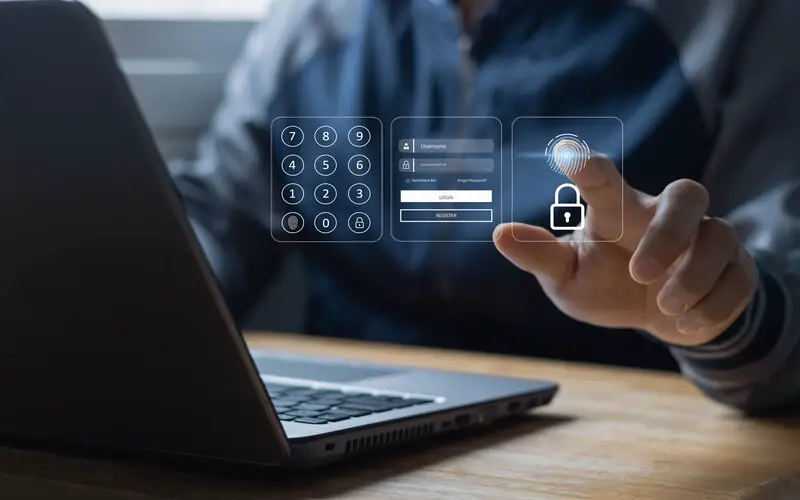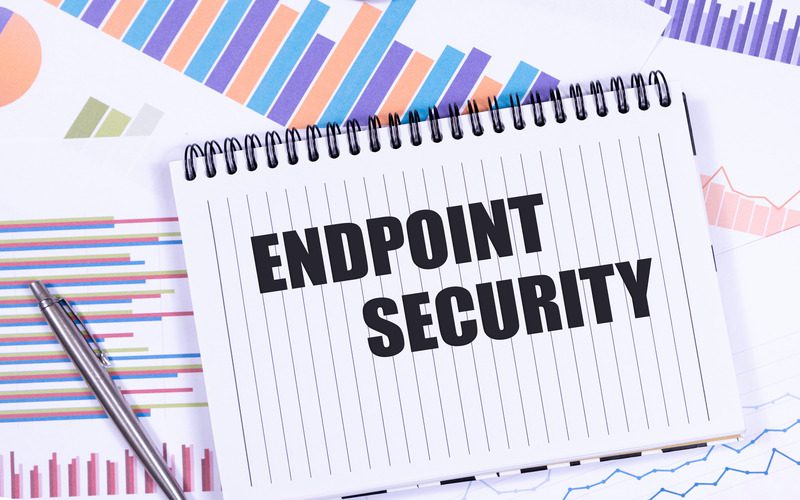The global average total cost of a data breach in 2021 was a whopping $4.24 million. According to the trends over the last couple of years, this figure is expected to rise in 2022. That said, it is becoming increasingly important to always have eyes on your systems and networks to make sure you can identify and remediate any potential threats and vulnerabilities before they cause any significant damage to your business. However, given the volume of work that IT management entails, it can be very difficult for your IT team to have complete visibility of your IT infrastructure all of the time. And that’s why we have SOC.
What is a Security Operations Center (SOC)?
A SOC is a centralized facility within an organization that houses an information security team responsible for continuously monitoring, detecting, analyzing and responding to any cybersecurity incidents on a 24/7/365 basis. The team makes use of a set of predefined processes and a variety of solutions to prevent and remediate cybersecurity incidents and strengthen the organization’s security posture.
A SOC is often confused with a variety of similar IT functions. Let’s take a look at the differences between a SOC and some other IT functions below:
NOC vs. SOC
A NOC or Network Operations Center is a facility that’s responsible for maintaining optimal network performance and ensuring that the organization’s IT infrastructure duly meets SLAs. On the other hand, a SOC is tasked with protecting an organization against cyberattacks that could otherwise cause business disruption.
In essence however, both a NOC and a SOC are similar in the sense that both are focused at protecting the organization against potential threats and risks to corporate productivity and network performance.
SIEM vs. SOC
SIEM or Security Incident Event Management solutions collect and aggregate data from a variety of different sources and implement data analytics to detect and identify probable cyberthreats to the network. On the other hand, a SOC monitors an organization’s network to identify and remediate cyber incidents. SIEM and SOC work in tandem with each other to alert companies about any potential cyber incidents and help them prevent data breaches.
MDR vs. SOC
MDR or Managed Detection and Response is a managed security service that is typically outsourced to enhance the protection of your IT infrastructure against cyberthreats. It’s basically an advanced, round-the clock security control that is useful for businesses that do not have their own SOC. As discussed above, a SOC is responsible for security device management, incident qualification, threat and vulnerability management and proactive monitoring, among other functions.
How does a SOC work?
The first step towards setting up a SOC is for the organization to define a detailed strategy and then design a suitable security architecture to support that strategy that the SOC team will work with. The strategy must include clear business-specific goals for the different departments.
The SIEM system works in tandem with the SOC and gathers events and logs from hundreds of organizational systems and security tools and creates actionable security alerts. The SOC team analyzes these data logs and responds to the security alerts generated by SIEM.
In addition to this, the SOC also monitors endpoints and networks for vulnerabilities in order to stay in compliance with industry regulations and protect critical data against cyberthreats. Some SOCs also leverage malware reverse engineering, cryptanalysis and forensic analysis to detect and analyze security incidents.
What is the primary goal of a SOC?
According to the 2022 Global MSP Benchmark report, the percentage of MSPs who said they feel their business is at greater risk from cybercriminals than in the past increased from 39% in 2021 to 50% in 2022. SOC is a critical component of an organization’s security system and data protection strategies. With continuous 24/7 monitoring, a SOC helps reduce the level of exposure of an organization’s systems and networks to both internal and external risks.
In the absence of an efficient SOC, cyberattacks can end up going unnoticed for a long time and wreak havoc on systems since most companies do not possess the solutions to detect and respond to cyberthreats in a timely manner.
A SOC allows organizations to have better visibility of their environment and also implement suitable strategies and procedures to curb cyberattacks. With timely detection of vulnerabilities, organizations can be better prepared to remediate cyber incidents before they aggravate.
What are the three major elements of a SOC?
The success of a SOC depends on three major elements, namely people, processes and technologies. In this section, we’ll discuss what each entails.
People
The most important pillar for any organization’s cybersecurity strategy is its people. It is also very difficult to find the right people to manage your SOC most efficiently. In order to set up an efficient SOC, you need people of different skill sets to perform different roles. In the absence of the right people, even the most sophisticated of your security systems and processes will fall flat and not yield the required results.
Processes
For the SOC to perform to its highest potential, you must have a set of pre-defined processes for the SOC operators to follow. These processes help the operators understand what needs to be done in a particular situation and also include protocols for documentation to track data, security measures for transferring confidential data, managing client data and user authentication to bolster data security. In addition, there should also be processes that define how to monitor networks for vulnerabilities and how to mitigate risks associated with security incidents.
Technologies
Having a set of powerful, well-integrated technologies is imperative to building an efficient and effective SOC. Businesses must aim for a layered approach to building a fool-proof security architecture that repels even the most sophisticated cyberattacks.
Some of the most important technologies for building a strong SOC are cloud security, data encryption, endpoint security, application security, malware detection, vulnerability scanners, network security, firewalls and so on. The most successful SOC creates an interconnected security system with these tools to achieve a well-rounded cybersecurity posture.
What is a SOC team?
A SOC operates as a hub or a command center that monitors an organization’s entire IT infrastructure including appliances, devices, information storage systems and networks. A SOC houses a team of skilled operators that are responsible for continuously monitoring, detecting, analyzing and responding to cyberthreats.
Organizations that understand the importance of cybersecurity invest adequate resources in building a strong SOC team and providing it with the necessary tools to handle potential cyberthreats. The roles and responsibilities of a SOC team are fairly well-defined and straightforward. The goal of a successful SOC team is to implement the right skills and employ minimum resources to gain visibility into active and emerging threats.
SOC team: Roles and responsibilities
In this section, we will discuss some of the main roles of a SOC team and what each is responsible for:
Incident Responder
As the name suggests, an incident responder is tasked with configuring and monitoring security solutions and leveraging them to identify threats. As the Tier 1-level profile in a SOC team, the incident responder examines hundreds of alerts every day in order to segregate them based on level of prioritization. Once classified, this information is then forwarded to the security investigator.
Security Investigator
After a security incident, the security investigator employs the use of sophisticated resources, such as threat intelligence, to find out what happened and why. Working closely with the incident responder, the security investigator identifies the affected devices and hosts. The security investigator also carries out an in-depth investigation to identify the attack source, methodologies employed to launch the attack and so on.
Security Analyst
A security analyst is responsible for compiling and analyzing data around a security incident to review past incidents, detect unidentified vulnerabilities and investigate possible resolutions. Security analysts not only report any potential cyberthreats but also suggest changes required to bolster the cybersecurity posture of an organization.
SOC Manager
The SOC manager is tasked with managing the SOC team and supervising SOC operations. They hire and train other members of the SOC team and are responsible for designing and implementing a strong cybersecurity strategy. The SOC manager also orchestrates and supervises the organization’s response to major cyberthreats.
Auditor
Like most other IT processes, SOC operations too fall under the scope of certain industry and government regulations. As such, the SOC team comprises an auditor who is certified in compliance mandates and can ensure that the organization stays compliant with the required regulations to avoid hefty penalties owing to non-compliance.
Security Architect/Engineer
A security architect or security engineer is a hardware/software specialist who is responsible for maintaining the organization’s security architecture and keeping systems and tools up to date. They might also be responsible for designing, documenting and updating security protocols to be followed by the organization.
What are SOC services?
According to Cybersecurity Ventures, the imperative to protect increasingly digitized businesses, Internet of Things (IoT) devices and consumers from cybercrime will propel global spending on cybersecurity products and services to $1.75 trillion cumulatively for the five-year period from 2021 to 2025. It is likely that more businesses will turn to SOC services to reinforce their cybersecurity stance and protect their IT infrastructure from emerging cyberthreats.
There are an array of security services and functions that a SOC team typically provides. Here’s a roundup of some of the common SOC services that you must know about:
Incident response
Incident response is one of the primary services provided by SOCs. Once a security incident occurs, the SOC team is responsible for identifying and remediating it as soon as possible. Quick response to an incident is imperative to minimize business disruption and ensure quick recovery to normal operations. The SOC team builds a robust security incident response plan to ensure immediate and effective response to an incident.
Threat monitoring
The SOC team is also responsible for employing adequate tools and resources to scan the organization’s entire IT network to detect any threats, suspicious activities or abnormalities that might lead to a security incident. This round-the-clock monitoring helps the SOC quickly identify emerging threats and take immediate actions to minimize the potential damage.
Vulnerability scanning
The SOC team employs the use of advanced vulnerability scanning solutions to examine computer networks, identify any system weaknesses and vulnerabilities and fix them before they can be exploited. Since infrastructural changes and business growth can lead to new vulnerabilities popping up every day, vulnerability scanning is a constant process that needs to be carried out regularly to identify and remediate any system exposures as and when they occur.
What is managed SOC?
Also termed as SOC-as-a-Service, managed SOC comprises cybersecurity experts that are outsourced by an organization that does not have in-house SOC. This team of external experts monitor your network, logs, devices and cloud environment to identify, analyze and remediate threats and vulnerabilities.
Managed SOC services are usually employed on a subscription basis where the organization pays a regular (monthly, quarterly, yearly) fee to ensure that their IT environment is safe and well-protected against emerging cyberthreats and vulnerabilities. Organizations that do not have the budgets to invest in security software, experts, hardware, training and more can still ensure 24/7 monitoring of their IT infrastructure and enhance their security posture at a fraction of the cost.
Managed SOC from Kaseya
Managed SOC is a white labeled managed service offered by Kaseya that helps you stop attackers in their tracks with Kaseya’s powerful threat monitoring platform to detect malicious and suspicious activity across three critical attack vectors namely endpoint, network and cloud. Kaseya’s well-rounded team of security veterans hunt, triage and work with your team to discover actionable threats through continuous monitoring, breach detection, threat hunting, intrusion monitoring and more. With Kaseya’s managed SOC, you get comprehensive protection against modern threats and can sleep better at night knowing that your network is being monitored and protected against threats, 24/7.
Want to know how Kaseya’s SOC can help you achieve a holistic and layered approach to cybersecurity? Get in touch with us today.





